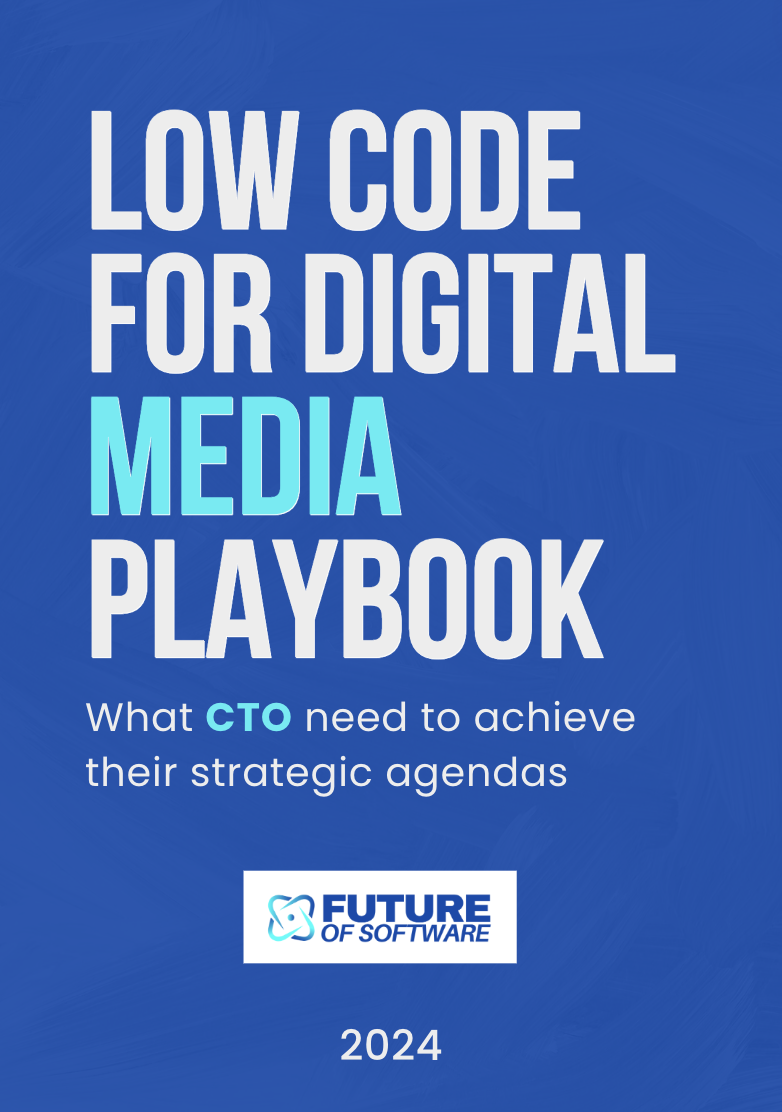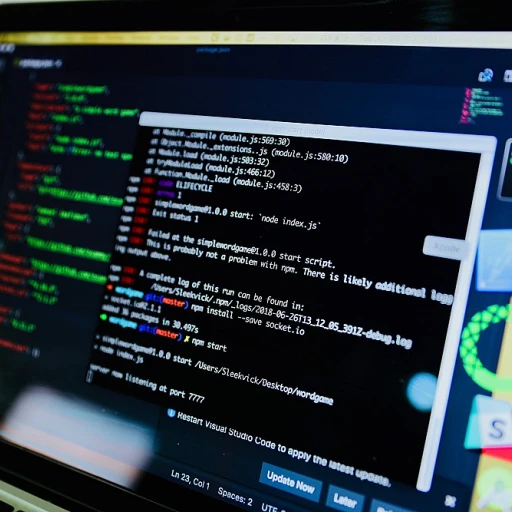
The Evolution of Digital Media Tools
Tracing the Journey of Digital Media Tools
The evolution of digital media tools has been nothing short of transformative. Over the past few decades, these tools have grown from simple applications to complex systems that integrate seamlessly with third-party apps. This transformation has been driven by the need for more robust data management, enhanced user experience, and the demand for real-time data processing.
Initially, digital media tools were standalone applications, limited in their capabilities and often requiring manual updates and management. As the digital landscape expanded, the need for more sophisticated solutions became apparent. This led to the development of platforms that could support a wide range of functionalities, from content creation to social media management.
With the advent of APIs, digital media tools began to integrate with third-party services, allowing for a more cohesive and efficient workflow. This integration process has enabled users to leverage the strengths of multiple applications, creating a more dynamic and flexible user experience. As a result, the focus has shifted from merely developing standalone tools to creating platforms that can seamlessly integrate with third-party apps.
Today, the integration with third-party apps is not just a feature but a necessity. It allows for better error handling, improved security, and the ability to adapt to the ever-changing digital environment. As we look to the future, the role of third-party integrations will only continue to grow, driving innovation and enhancing the capabilities of digital media tools.
For more insights into how these tools are shaping the future of software, you can explore effective frontend solutions for headless CMS.
The Role of Third-Party Apps in Modern Software
The Impact of Third-Party Applications on Software Ecosystems
In the rapidly evolving landscape of digital media tools, third-party applications have become indispensable. These apps offer a wide range of functionalities that enhance core software systems, providing users with a more comprehensive experience. By integrating third-party apps, software platforms can expand their capabilities without the need for extensive in-house development.
One of the key advantages of integrating third-party applications is the ability to leverage pre-built solutions that have already been tested and refined. This not only saves time but also reduces the risk of errors during the development process. Moreover, third-party integrations often come with robust API integration options, allowing seamless communication between different systems and services.
API integrations play a crucial role in ensuring that data flows smoothly between applications, enabling real-time data exchange and enhancing the overall user experience. This is particularly important in today's fast-paced digital environment, where users expect instant access to information and services. By utilizing party APIs, software developers can focus on creating unique features while relying on third-party tools for supplementary functionalities.
However, integrating third-party applications is not without its challenges. Security and data management are critical considerations, as integrating external apps can introduce vulnerabilities. It is essential to follow best practices in error handling and security protocols to safeguard user data and maintain the integrity of the software platform.
For those interested in exploring innovative solutions in this space, consider reading more about innovative headless CMS solutions, which highlight how third-party apps can be effectively integrated into modern software architectures.
Benefits of Seamless Integration
Advantages of Seamless Integration in Digital Media Tools
In the rapidly evolving landscape of digital media, the integration of third-party apps has become a cornerstone for enhancing user experience and operational efficiency. Seamless integration with third-party applications offers numerous benefits that are pivotal for modern software development.
One of the primary advantages is the ability to leverage real-time data across platforms. This capability ensures that users have access to the most current information, enhancing decision-making and improving the overall user experience. By integrating third-party APIs, digital media tools can offer functionalities that would otherwise require extensive in-house development, saving both time and resources.
Moreover, seamless integration facilitates improved data management and security. With robust API integration, systems can ensure secure data transfer between applications, reducing the risk of data breaches and enhancing trust among users. This is particularly important in an era where data privacy is paramount.
Another significant benefit is the enhancement of platform versatility. By integrating with third-party services, digital media tools can offer a wider range of features, catering to diverse user needs. This adaptability is crucial for staying competitive in a market where user expectations are continually evolving.
Finally, seamless integration supports efficient error handling and system maintenance. By utilizing pre-built solutions and best practices from third-party apps, developers can streamline the integration process, reducing the likelihood of errors and minimizing downtime. This not only improves the reliability of the software but also enhances user satisfaction.
In conclusion, the integration of third-party applications into digital media tools is not just a trend but a necessity for modern software systems. It offers a myriad of benefits, from improved user experience to enhanced security and operational efficiency, making it an indispensable component of contemporary software development.
Challenges in Achieving Seamless Integration
Overcoming the Hurdles of Integration
Achieving seamless integration with third-party apps is a complex endeavor, often fraught with challenges that can impede the development process. One of the primary obstacles is ensuring compatibility between diverse systems and platforms. With the myriad of digital media tools available, integrating third-party services requires meticulous planning and execution to ensure that all components work harmoniously.
Another significant challenge lies in managing API integrations. APIs are the backbone of modern software, facilitating communication between different applications. However, the integration process can be cumbersome due to varying API standards and documentation quality. Developers must navigate these inconsistencies to achieve a smooth user experience.
Security is also a major concern when integrating third-party applications. Ensuring that data is protected during the integration process is paramount. This involves implementing robust security measures and adhering to best practices in data management to prevent unauthorized access and data breaches.
Time management is another critical factor. The integration process can be time-consuming, often requiring significant resources and expertise. Delays in integration can impact the overall project timeline, affecting the delivery of new features and updates to users.
Lastly, error handling is a crucial aspect of achieving seamless integration. Developers must anticipate potential issues and implement strategies to address them promptly. This includes setting up monitoring systems to detect and resolve errors in real time, ensuring that the integration process remains smooth and efficient.
Innovative Solutions and Technologies
Innovative Approaches to Seamless Integration
In the rapidly evolving landscape of digital media tools, the integration with third-party applications has become a cornerstone for enhancing user experience and operational efficiency. As we delve into innovative solutions and technologies, it's crucial to understand how these advancements are shaping the future of software development.
API-Driven Development
One of the most significant innovations in achieving seamless integration is the use of robust APIs. API-driven development allows for real-time data exchange between systems, enabling third-party integrations that are both efficient and reliable. By leveraging pre-built APIs, developers can focus on enhancing core functionalities without reinventing the wheel. This approach not only saves time but also ensures that the integration process is streamlined and less prone to errors.
Embracing Microservices Architecture
Microservices architecture is another innovative solution that supports seamless integration. By breaking down applications into smaller, independent services, developers can integrate third-party tools more effectively. This modular approach facilitates better management and scalability, allowing for more flexible and dynamic integration with third-party services. As a result, businesses can adapt quickly to changing market demands and user needs.
Enhanced Security Protocols
With the increasing reliance on third-party apps, security remains a top priority. Innovative security protocols are being developed to ensure that data exchange between systems is secure and compliant with industry standards. Implementing best practices in security management, such as robust authentication and encryption methods, is essential for protecting sensitive information during API integration.
AI and Machine Learning Integration
Artificial intelligence and machine learning are playing a pivotal role in enhancing the integration process. By utilizing AI-driven analytics, businesses can gain insights into user behavior and optimize their integration strategies accordingly. Machine learning algorithms can also automate error handling and improve the overall efficiency of third-party integrations, leading to a more seamless user experience.
As digital media tools continue to evolve, the integration with third-party applications will remain a critical component of software development. By embracing these innovative solutions and technologies, businesses can ensure that their systems are not only efficient but also adaptable to future trends.
Future Trends in Digital Media and App Integration
Emerging Trends in Digital Media Integration
As digital media tools continue to evolve, the integration with third-party applications is becoming increasingly sophisticated. This evolution is driven by the need for more efficient data management and enhanced user experiences. In the future, we can expect several key trends to shape the landscape of digital media and app integration.
Real-Time Data Synchronization
One of the most significant trends is the push towards real-time data synchronization. As users demand more immediate responses and interactions, systems are being developed to handle real-time data more effectively. This involves integrating third-party APIs that can provide instantaneous updates and feedback, enhancing the overall user experience.
Advanced API Integration
API integration is at the heart of seamless integration processes. Future developments will likely focus on creating more robust and flexible APIs that can easily connect with a variety of third-party services. This will not only improve the functionality of digital media tools but also allow for more personalized and dynamic user interactions.
Enhanced Security Measures
With the increasing reliance on third-party integrations, security remains a top priority. Future software development will likely incorporate advanced security protocols to protect data and ensure safe interactions between systems. This includes better error handling and management practices to prevent data breaches and unauthorized access.
Platform Agnostic Solutions
As the digital landscape becomes more diverse, there is a growing need for platform-agnostic solutions. These solutions will enable seamless integration across different systems and devices, providing users with a consistent experience regardless of the platform they are using. This trend will drive the development of more adaptable and versatile digital media tools.
AI-Driven Integration Processes
Artificial intelligence is set to play a crucial role in the future of software integration. AI-driven processes can automate and optimize the integration of third-party apps, reducing the time and effort required for development. This will lead to more efficient and effective integration processes, allowing developers to focus on creating innovative solutions.
In conclusion, the future of digital media and app integration is poised for significant advancements. By embracing these emerging trends, developers can create more powerful and user-friendly tools that meet the evolving needs of users and businesses alike.















